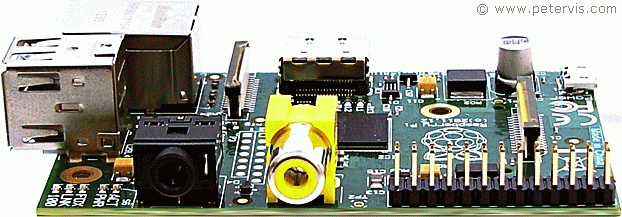Raspberry Pi GPIO Cable

A General-Purpose I/O (GPIO) cable is an electrical conductor, which connects the header pins of the P1 socket on the Raspberry Pi board to project circuits on a breadboard. The socket consists of two rows of 13 pins; hence, a 26-way socket is required. The pitch of the pins is 0.1-inch (2.54 mm). Today, cable solutions are plentiful, and there are two main types available on the market.
There are many Raspberry Pi connector and cable solutions on the Internet, but if you are new to the Raspberry Pi and need a low cost solution that is affordable then this article might help, because the cost of a ribbon cable can vary a lot.
26-Pin IDC Cable
The 26-pin IDC cable is usually 8-inch in length and grey coloured. An IDC female plug usually terminates these cables at both ends, and therefore they are useful for connecting the raspberry Pi to another board. These cables are similar to those used for connecting hard drives to motherboards on personal computers, and they even have an end wire with a red stripe.
40-Way Rainbow / DuPont Wire

If you have some whippersnappers playing with the Raspberry Pi, then their favourite will be the "Rainbow Cable", also called DuPont wire, which consists of multi coloured wires. Usually this type of cable consists of 40 wires, in groups of ten different colours; therefore, you get four of each colour in a flat ribbon cable. If you get one of these, then you can tear the cable and make a 26-way ribbon cable, and use the rest of the extra wires for your breadboard projects.
Child Poverty
The recent government survey stated that child poverty is on the increase due to job losses, and benefit cuts. All of this is bound to have an impact on pocket money; therefore, I aim to write about the lowest cost solutions that I can find because in the end making education affordable for all children is a goal that I share with the Raspberry Pi Foundation.
The cost of connectors and cables should be low and should remain so because their manufacture is an automated process. There is virtually no manual labour involved, and a good and efficient factory could produce these by the millions for almost nothing.
Whilst the Chinese charge pennies for their manufacture, the price hike occurs in the UK. There are many greedy businesspersons, who need to have faster cars, more wives, more holiday villas, and all of that comes out of raising prices, and therefore suddenly a ten-cent cable costs twenty bucks.
However, the Chinese are willing to sell it to you directly and ship it for almost nothing and it still costs much less. At places such as eBay, you can buy these cables for as little as a pound and it arrives all the way from China.
Review

I needed to buy ribbon cables and breadboards for six whippersnappers; however, many cables that I saw were too expensive for my humble budget, so I decided to look on eBay.
I found many sellers offering the rainbow cables, which looked identical, except for the huge variance in price. The price can vary from as much as twenty dollars to one dollar. After a little research, I found out that it was only one factory making these, so I decided to live a little dangerously and order them directly from a Chinese seller for a pound each. After all, if you pay by PayPal you get the best protection. I was pleasantly surprised because, two weeks later, I received my cables and they were fine.
Tear and Separate

The great thing about these rainbow cables is that you can separate them, which is very useful, because if you were going to blink an LED, you need just three wires from the P1 socket to the breadboard. Your circuits will appear much simpler which is useful if you were teaching.
If you study the GPIO P1 header you will notice that many pins are ground and therefore not used, therefore using a full parallel cable will waste many tie-points on the breadboard.
The most cost-effective and simplest approach is to connect individual pins from the GPIO to the breadboard. This way you have the maximum amount of tie-points possible for your breadboard project.
Let’s all Blink LEDs

From a 40-pin cable, you can make four smaller cables with 10 strands of wire each, and with the same colour sequence brown-to-black. So why not share your cable with your friends in class and you can all blink LED lights!
This Article Continues...
Raspberry Pi GPIO CableGPIO Cable Raspberry Pi
RPi GPIO: Recycling Cables
Solderless Breadboards
